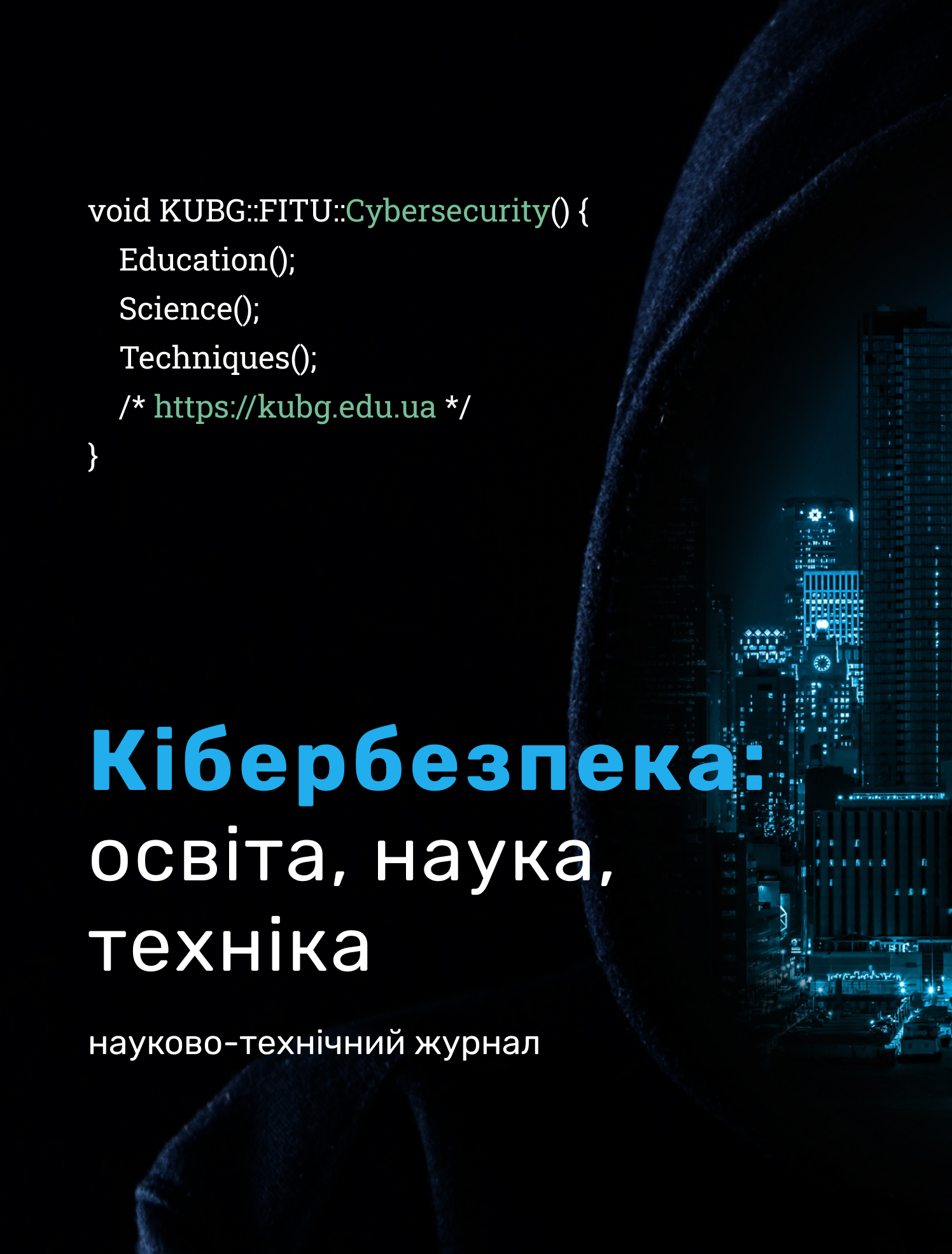METHOD FOR ENHANCING THE SECURITY LEVEL OF THE STATE’S CRITICAL INFORMATION SYSTEMS
DOI:
https://doi.org/10.28925/2663-4023.2025.30.988Keywords:
critical infrastructure, critical infrastructure objects, critical information systems, threats, security, level of security, stability, ensuring stability, efficiency, risk, reliability, risk management, optimization of strategiesAbstract
In today's conditions of increasing cyber threats and the complexity of technological systems, ensuring the security of critical information systems (CIS) is one of the key tasks of national security of the state. Existing approaches to assessing the state of CIS security are mainly focused on individual technical or organizational aspects, which does not provide comprehensive consideration of the relationships between risk, reliability and stability. The article presents a method for increasing the level of CIS security, which involves formalizing the relationships between these parameters in the form of a system of mathematical expressions and introducing an integral indicator of the level of security. The proposed approach allows quantitatively assessing the current state of CIS security, predicting the impact of potential threats and determining optimal strategies for increasing stability, taking into account limited resources. The developed method ensures objective decision-making on risk management and increasing the effectiveness of CIS protection and contributes to the formation of an adaptive national cybersecurity system. Further research involves experimental testing and verification of the proposed method on examples of the functioning of critical infrastructure objects of various industries to assess its effectiveness, versatility and possibility of practical implementation.
Downloads
References
Сидоренко, В., & Максимець, А. (2025). Модель забезпечення стійкості критичних інформаційних систем в умовах впливу внутрішніх та зовнішніх дестабілізуючих чинників. Електронне фахове наукове видання «Кібербезпека: освіта, наука, техніка», 3(27), 560–571. https://doi.org/10.28925/2663-4023.2025.27.779.
Закон України «Про критичну інфраструктуру» (2021). №1882-IX. https://zakon.rada.gov.ua/laws/show/1882-20.
Кабінет Міністрів України. (2021). Постанова №1109 «Деякі питання забезпечення безпеки та стійкості критичної інфраструктури» від 09.10.2021. https://zakon.rada.gov.ua/laws/show/1109-2021-%D0%BF.
Кабінет Міністрів України. (2022). Постанова №518 «Про затвердження критеріїв віднесення об’єктів до категорій критичності» від 13.05.2022. https://zakon.rada.gov.ua/laws/show/518-2022-%D0%BF.
Адміністрація Державної служби спеціального зв’язку та захисту інформації України. (2025). Методика оцінки стану захищеності об’єктів критичної інфраструктури (Наказ № 17 від 14.01.2025). https://zakon.rada.gov.ua/laws/show/z0375-25#Text
Мурасов, Р., Мельник, Я. (2023). Оцінювання захищеності кіберпростору об’єктів критичної інфраструктури України. Сучасні інформаційні технології, (3), 98–112. https://sit.nuou.org.ua/article/view/280288.
Суходоля, О. (2022). Стійкість критичної енергетичної інфраструктури та життєдіяльності громад. Аналітична доповідь НІСД, 72 с. https://chtyvo.org.ua/.../ Stiikist_krytychnoi_enerhetychnoi_infrastruktury_ta_zhyttiediialnosti_hromad.
Шевченко, Н. І., Плахотнюк, Р. В. (2024). Методичні підходи до оцінювання стійкості функціонування об’єктів критичної інфраструктури в умовах особливого періоду функціонування економіки України. Реформування економіки та інноваційні стратегії розвитку, 14(2), 112–126. https://reicst.com.ua/pmtl/article/view/2024-14-02-08.
Кириленко, С. П., Тищенко, В. В. (2023). Моделі оцінювання ризиків для критичної інфраструктури в умовах збройного конфлікту. Безпека життєдіяльності, 3(9), 74–88.
Третьяков, О. В., Халмурадов, Б. Д., Кічата, Н. М., & Ремська, А. В. (2025). Підхід до кількісної оцінки стійкості об’єктів критичної інфраструктури. Системи управління, навігації та зв’язку, 1(79), 178–183. https://doi.org/10.26906/SUNZ.2025.1.178-183.
Mahmood, Y., Afrin, T., Huang, Y., & Yodo, N. (2023). Sustainable development for oil and gas infrastructure from risk, reliability, and resilience perspectives. Sustainability, 15(6), 4953. https://doi.org/10.3390/su15064953
Mohd Safari, M.A., Masseran, N., Abdul Majid, M.H. (2021). Robust and Efficient Reliability Estimation for Exponential Distribution. Computers, Materials & Continua, 69(2), 2807–2824. https://doi.org/10.32604/cmc.2021.018815
Kong, J., Zhang, C., & Simonovic, S. P. (2021). Optimizing the resilience of interdependent infrastructures to regional natural hazards with combined improvement measures. Reliability Engineering & System Safety, 210, 107538. https://doi.org/10.1016/j.ress.2021.107538
Rehak, D., Flynnova, L., Hromada, M., & Fuggini, C. (2023). The importance of resistance in the context of critical infrastructure resilience: An extension of the CIERA method. Systems, 11(10), 506. https://doi.org/10.3390/systems11100506.
Irankunda, G., Zhang, W., Fernand, M., & Zhang, J. (2024). Assessing the Resilience of Critical Infrastructure Facilities toward a Holistic and Theoretical Approach: A Multi-Scenario Evidence and Case Study. Sustainability, 16(20), 8735. https://doi.org/10.3390/su16208735
Сидоренко, В. (2025). Метод оцінювання стійкості об’єктів критичної інформаційної інфраструктури держави. Електронне фахове наукове видання «Кібербезпека: освіта, наука, техніка», 1(29), 837–853. https://doi.org/10.28925/2663-4023.2025.29.944
Published
How to Cite
Issue
Section
License
Copyright (c) 2025 Вікторія Сидоренко, Сергій Сидоренко

This work is licensed under a Creative Commons Attribution-NonCommercial-ShareAlike 4.0 International License.




